|
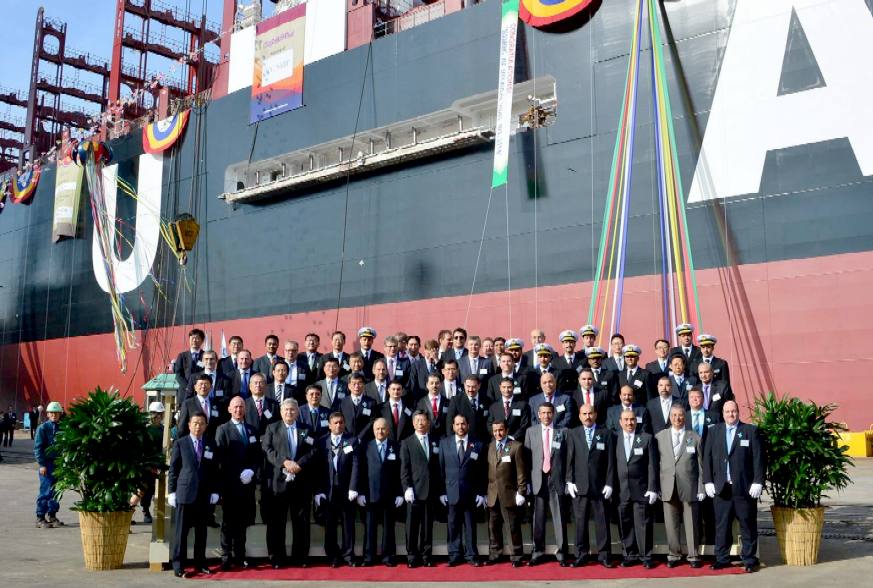
WORLD'S
FIRST LNG-READY (LARGE) CONTAINER SHIP NAMED - NOV 27 2014
The race is on in global maritime circles to be the “world’s first” in every aspect of environmental friendliness, particularly in regards to the incorporation of LNG as fuel onboard commercial ships.
There was yet another “world first” today in South Korea at the Hyundai Heavy Industries shipyard in Ulsan when United
Arab Shipping Company (UASC) named the first ever LNG-ready ultra large container vessel MV Sajir, the first vessel in UASC’s current 17-ship “eco-efficient” newbuilding program, comprising 17 of the world’s most eco-efficient vessels.
MV Sajir has a 15,000 TEU capacity, and it is classed by DNV
GL. According to the owner, preliminary calculations indicate an Energy Efficiency Design Index (EEDI) value that is close to 50% below the 2025 limit established by the IMO. MV Sajir will start operating on the Asia–North Europe route after delivery. Ten further A15 vessels and six 18,800 TEU (A18) box ships will be delivered from Hyundai Heavy Industries and Hyundai Samho Heavy Industries to UASC by mid-2016.
"At UASC, we see efficiency as a key competitive differentiator in an increasing competitive market,” said H.E. Salem Ali Al Zaabi, Chairman of UASC. “Whether it stems from improving vessel design through our newbuilding program, strategic partnerships or empowering our people onboard and ashore to deliver improvements, efficiency pervades every facet of our expansion plans. The Sajir perfectly embodies this ethos and, as the first of 17 vessels in our current newbuilding program, represents an important milestone in the evolution of UASC.”
Sajir takes its name from an area in Saudi Arabia that is known for its luscious landscape and
farming heritage.
“These highly efficient vessels help us significantly reduce the amount of fuel we consume per container,” said Jorn Hinge, President and CEO of UASC. “We operate one of the world’s youngest container vessel fleets and are committed to making it more environmentally sustainable. The A15 vessels go beyond what regulations require and set new standards in terms of efficient, safe and sustainable operations,” he remarked.
“By combining leading innovations in ship design, propulsion technology, energy management and container stowage, the UASC newbuildings set new standards in container shipping. We would like to thank our partners for mutually sharing their knowledge with our experts in order to develop some of the most efficient and safest vessels the industry has seen so far,” said Tor Svensen, Chief Executive Officer of DNV GL Maritime.
The CO2 output per TEU for this new vessel class will be 22% less than for a 13,500 TEU vessel delivered only two years ago. The environmental credentials of the A15 class are further highlighted by the fact that these vessels are designed and prepared for a quick and cost-efficient LNG retrofit at a later stage. This “LNG-ready” concept has been confirmed with an Approval in Principle from DNV GL as an industry first. The vessels will further receive DNV GL’s CLEAN class notation, which documents that the new generation ships comply with environmental regulations beyond today’s normal
IMO, flag and class standards. They will also be provided with an Inventory of Hazardous Materials, which is not yet a mandatory requirement, and they are one of the first to receive an Energy Efficiency Certificate with documented EEDI.
The A15 class vessels also deliver world-class standards of structural safety. The fatigue strength of the hull structure is based on the assumption of 25 years of operation in the North Atlantic, which is far beyond the normal standard. The A15 vessels will also be equipped with a DNV GL approved hull stress monitoring system that provides guidance to the crew on current stress level in the ship structure during operation.
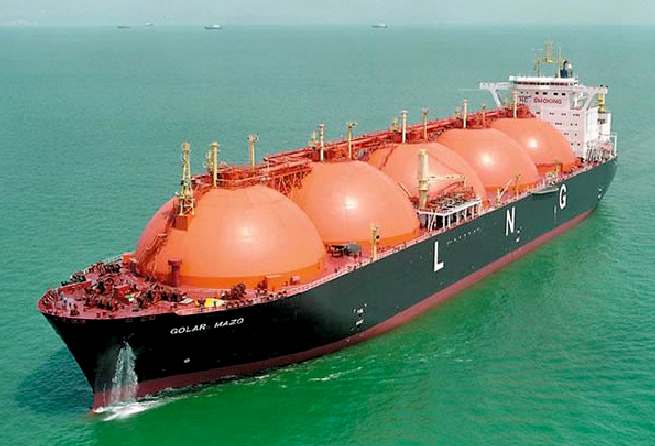
JULY
22 2014 - CLASS NK LNG TECHNOLOGY SEMINARS
ClassNK held LNG-Fuelled Vessel Technologies seminars in Shanghai and Singapore on 22 July and 24, July 2014, respectively.
With the industry looking to adopt cleaner fuels to meet new environmental regulations as well as future economic growth , the demand for LNG as a fuel is rapidly increasing. ClassNK said it organized the seminars to provide the industry with the latest technical information on the use of LNG as a fuel and related technology.
In addition to ClassNK’s own LNG experts, specialists from the various sectors of the
Japanese maritime industry including shipbuilders, shipowners and marine equipment manufacturers presented on a range of LNG related topics at the seminars. Approximately 160 industry members attended the event in Shanghai, and approximately 180 in
Singapore, where Taira Narisawa, Regional Manager of
China, and Toshio Kurashiki, Regional Manager of South Asia and Oceania gave the opening remarks on behalf of ClassNK at each respective event.
Among the foremost experts at the seminars, Professor Koji Takasaki, Graduate School of Engineering Sciences, Kyushu University gave a presentation titled “Development of Natural Gas Fuelled Ships in the World”, followed by a presentation from NYK LINE’s General Manager of Fuel Group Yukio Matsukata on “NYK’s Challenges on LNG Fuel Project.”
The seminar also explored viable options for the use of LNG as a fuel with Tetsuji Yamada, Daihatsu
Diesel MFG. Co. Ltd presenting on the “Development of Four-Stroke Marine Dual Fuel Engine,” and Kei Tanaka from the Cooperative Association of Japan
Shipbuilders outlining a “Study of Small Scale LNG
Carrier/Bunkering Ship with DF Engine.” Takashi Unseki, Chief Engineer,
Mitsubishi Heavy Industries explored various LNG usage options in his presentation “Environmentally Friendly and Superior Solution with LNG as Fuel.”
This seminar was supported by Japanese maritime media company Kaiji Press Co., Ltd in Shanghai and Maritime and Port Authority of Singapore (MPA) in Singapore.
For more information contact:
ClassNK Practical R&D Promotion Division
TEL: +81-3-5226-2025
FAX: +81-3-5226-2019
E-mail: rx-sec@classnk.or.jp
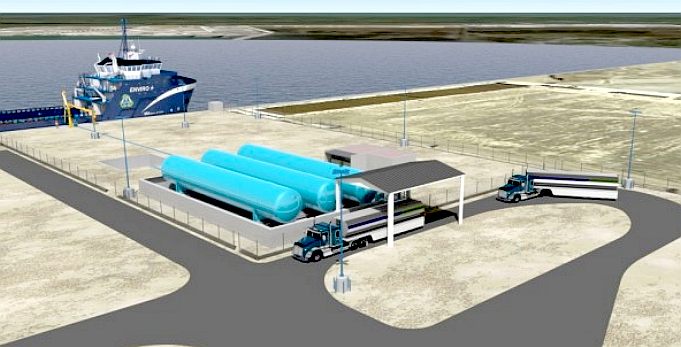
New Orleans-based Harvey Gulf International Marine says it has broken ground on the United States’ first LNG bunkering facility located at their Port
Fourchon, Louisiana terminal. This marks the official kick off of Phase I of the $25 million LNG (Liquefied Natural Gas) fueling facility at “Slip B”. When operational later this year, the facility will be the first of its kind in the United States, capable of refueling the Harvey’s upcoming fleet of dual-fuel offshore supply vessels and over-the-road vehicles operating on LNG.
“Today’s milestone represents another significant step in the path for Harvey Gulf to establish itself as the nation’s leader in utilizing LNG as a marine fuel,” said CEO Shane Guidry.
Harvey Gulf is currently investing $350 million on the construction of dual-fuel OSVs to be operated in the U.S. Gulf of Mexico. The first of six new ships was recently launched at Gulf Coast Shipyard in Gulfport, Mississippi and is expected to be christened and pressed into service later this year. Running on cleaner-burning natural gas, the 302-foot OSVs will meet the stringent requirements of the ABS
“ENVIRO+, Green Passport” notation, making them the most environmentally friendly OSVs in Gulf of Mexico.
“The dual fuel vessels and our LNG facility further expand HGIM’s commitment to develop and utilize the safest, most environmentally-friendly vessels and fuel technology available today,” Guidry added.
MAY
15 2014 - USA
In his speech at the LNG Export & Export & Infrastructure Conference Federal Maritime Commissioner
William P Doyle gives insights on the consequences of the adoption of Liquefied Natural Gas (LNG) as a marine fuel in the United States. The text from the Federal Commission Newsroom is as follows:
"Good Afternoon:
I am a Commissioner with the U.S. Federal Maritime
Commission. The Federal Maritime Commission is an independent regulatory agency responsible for regulating the nation’s international ocean transportation for the benefit of exporters, importers, and the American consumer. I should emphasize that my thoughts and comments here are mine and mine alone – they do not reflect the position of the Commission, and they should not be construed to represent the positions of any of my fellow Commissioners.
Liquefied Natural Gas (LNG) as a marine fuel is taking hold in the United
States. The Obama Administration strongly supports LNG as a marine fuel and is investing in the utilization of the fuel on ocean going ships. The Obama Administration is also embracing LNG’s potential on vessels working on the inland waterways. There is an abundant supply of natural gas in America. Natural gas has some positive environmental benefits when compared to traditional marine fuels. Considering the economics, natural gas is a more cost effective fuel source than marine residual and distillate fuels. The maritime industry is in the process of developing, converting and constructing LNG powered vessels. Bunkering for LNG vessels is an important component that is being explored and examined.
This afternoon I will address these points.
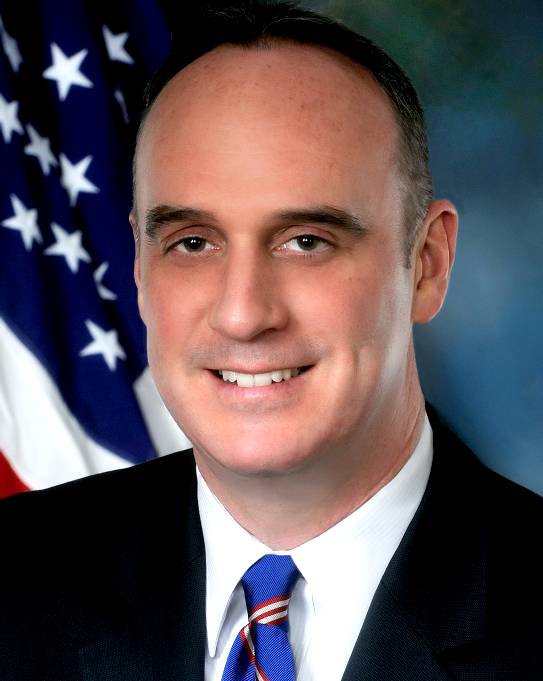
On January 1, 2013, the
United States Senate confirmed President Barack Obama’s nomination of William P. Doyle of Pennsylvania to Commissioner of the Federal Maritime Commission. He was sworn in on January 10, 2013.
Commissioner Doyle served over a decade as an officer in the U.S. Merchant Marine, serving aboard numerous classes of vessels. Combined, Commissioner Doyle has over 20 years of experience in the transportation industry, including both the maritime and energy sectors. Throughout his career, he has held several senior executive positions in the industry.
U.S. Supporting LNG as a Marine Fuel
Yesterday, Totem Ocean Trailer Express (TOTE) President & CEO Anthony Chiarello was honored at the White House as a 2014 transportation industry "Champion of Change." He was chosen for his role in leading the U.S. maritime industry toward natural gas as fuel.
Under the Obama Administration, the United States Department of Transportation’s Maritime Administration is sponsoring a $1.4 million program for two projects supporting the increased use of alternative fuels and technology in the maritime industry.
The first project is a public-private partnership between the Maritime Administration and U.S.-flag carrier Horizon Lines for the conversion and monitoring of one of its vessels to operate on LNG fuel. The second project includes a study being conducted by the U.S. subsidiary of Det Norske Veritas Inc. (DNV) to analyze the issues and challenges associated with bunkering of LNG powered vessels.
With respect to the inland waterways, there is an ongoing Pittsburgh Marine Corridor Natural Gas Feasibility Assessment which is examining whether realistic opportunities exist for converting inland waterways vessels from diesel to natural gas propulsion. This Assessment is being conducted through collaboration between Life Cycle Engineering, 3 Rivers Clean Energy, Marshall University Rahall Transportation Institute, and the Shearer Group,
LLC.
Next, the Port of Pittsburgh is funding the assessment and requirements of potential fueling sites as well as a cost benefit analysis for the conversion of vessels to LNG. According to U.S. Army Corps of Engineers, Pittsburgh is the third busiest inland port in the United States. About 34 million tons of cargo move through the Port of Pittsburg each year. Approximately 45,000 jobs are dependent upon this inland waterway transportation system.
The U.S. Department of Energy and the U.S. Maritime Administration are involved in these projects along with the Pittsburgh Region Clean Cities non-profit organization, the Richard King Mellon Foundation, the Benedum Foundation, and other industry companies.
The Pittsburgh Region Clean Cities is the designated regional organization for all U.S. Department of Energy Clean Cities initiatives. Clean Fuels/Clean Rivers is an initiative to build a natural gas marine corridor that includes the Pittsburgh river systems.
Importantly, the private sector has expressed strong interest and there are ongoing discussions regarding a demonstration project to convert an existing towboat to LNG power.
Environmental Benefits of Natural Gas
The use of LNG reduces sulfur oxide (SOx) emissions by between 90% and 99%. SOx is the major contributor to acid deposition otherwise known as acid rain. This reduction in emissions brings SOx emissions within limits mandated by the Emission Control Areas designated by the IMO. Using LNG reduces nitrous oxide (NOx) emissions by approximately 90%. NOx is a major contributor to smog. Finally, LNG has a lower carbon content than traditional bunker fuels, giving off up to 25% less CO2 emissions.
Under MARPOL’s Annex VI, progressively more limits for NOx and SOx emissions are being placed on the global shipping industry over the next decade. Within U.S. waters, these requirements are implemented through the Act to Prevent Pollution from Ships (APPS). NOx emission limits are being imposed in a tiered approach, based on engine speed, while SOx is being limited primarily by regulating sulfur content in fuel.
Economic Benefits of LNG as a Marine Fuel
Based on the current forecasts, natural gas delivered for production of LNG in the U.S. is now more than 50% less expensive on an energy equivalent basis than marine residual fuel and marine distillate fuel. It is projected that this relative price advantage will continue, and even increase, through 2035. This has opened up an opportunity for significant annual fuel cost savings when converting marine vessels that use petroleum fuel to natural gas operation.
About 70% of domestic shipping relies on distillate fuel oil and the remaining 30% relies on residual fuel oil. By contrast, over 90% of international shipping is fueled by residual fuel oil. In comparison to distillate fuel, residual fuel is much more viscous – and is essentially a solid at room temperature. Residual fuel must be heated to keep it in liquid form for transport and storage as a marine fuel. Residual fuel also has significantly higher sulfur content than distillate fuel – 1% sulfur or more – and much higher heavy metal content. Residual fuel is less expensive than distillate fuel.
Examples of Projects in the United States Moving Forward on LNG as a Marine Fuel
In February, General Dynamics NASSCO shipyard in San Diego, California held a ceremony marking the first cut of steel for the construction of TOTE’s new Marlin Class container ship. It is expected to be the first LNG-powered containership in the world. TOTE expects to build two of these LNG powered vessels and homeport them in Jacksonville, Florida and operate them in the U.S. mainland to Puerto Rico trade. The new Marlin Class vessels will create a reduction of sulfur dioxide (SOx) emissions by 98 percent, particulate matter (PM) by 99 percent, nitrous oxide (NOx) and carbon dioxide (CO2) by 71 percent over TOTE’s ships currently operating in Puerto Rico.
TOTE intends to strategically locate LNG fueling stations that will be an integral part of its operations. To this end, in February, TOTE announced an agreement with Pivotal LNG and WesPac Midstream to provide LNG to the ships by developing a new LNG fueling facility in Jacksonville, Fla.
TOTE is also currently in the process of converting its two 839-foot, MAN-powered Orca-class Ro/Ro vessels to mostly LNG operation. These vessels operate in the Tacoma, Washington to Anchorage, Alaska trade. In 2012, the U.S. Coast Guard granted TOTE the waiver it needs to convert the vessels while they remain in service. TOTE said that its conversion program is the product of a public-private partnership among TOTE, the U.S. Environmental Protection Agency, and the U.S. Coast Guard. TOTE has selected Wärtsilä to supply the main engines, generators and integrated LNG storage and fuel gas handling systems for the conversion project.
In November 2013, Crowley announced it had executed agreements with shipbuilder VT Halter Marine Inc., of Pascagoula, Miss., to build two of the world’s first LNG-powered combination container – Roll-On/Roll-Off (ConRo) ships. The ships will operate in the United States mainland to Puerto Rico trade. The vessel design is the work product of Wärtsilä Ship Design in conjunction with Crowley subsidiary Jensen Maritime, a Seattle-based naval architecture and marine engineering firm.
Additionally, in September 2013, Aker Philadelphia Shipyard and Crowley announced a partnership to build up to eight (8) tankers. Citing the monumental shale related activity in the United States, the parties are securing their respective positions due to the increased demand for U.S.-built tankers. These tankers are designed to allow the ships to convert to LNG power.
In November 2013, Aker Philadelphia Shipyard announced it had been selected by Matson Navigation Company (Matson) to construct two 3,600 TEU containerships. The containerships will be utilized in Matson's service from the U.S. West Coast to Hawaii. The vessels will be built with dual fuel engines and will be ready for conversion to LNG propulsion.
General Dynamics NASSCO shipyard currently has contracts and options to construct seven (7) LNG conversion ready U.S.-Flag tankers. NASSCO has agreements with Seabulk Tankers and American
Petroleum Tankers (now Kinder Morgan Tankers).
At the beginning of 2014, Zeus Development Corporation identified approximately 42 vessels in North America that are under development or evaluation for conversion to LNG fuel.
LNG Bunkering in North America
LNG powered ships will need to refuel.
In February, the U.S. Coast Guard issued a notice seeking public comment on two draft policy letters regarding safety measures for LNG as a marine fuel. The first draft policy letter provides voluntary guidance for LNG fuel transfer operations on vessels using natural gas as a fuel and for the training of personnel. The second draft policy letter discusses voluntary guidance and existing regulations applicable to vessels and land based facilities conducting LNG marine fuel bunkering operations, and provides voluntary guidance on safety, security, and risk assessment measures for these operations.
In March, the American Bureau of Shipping (ABS) released a report entitled Bunkering of Liquefied Natural Gas-Fueled Marine Vessels in North America. The objective of the report is to provide guidance to potential owners and operators of gas-fueled vessels, as well as LNG bunkering vessels and facilities, to help them obtain regulatory approval for projects.
Last month, the West Coast Marine LNG Joint Industry Project Steering Committee in Canada issued a report stating that Vancouver is positioned to be North America's preferred LNG bunkering destination.
In February, Harvey Gulf International Marine broke ground for its $25 million LNG fueling facility at Port Fourchon, La. In January, Gulf Coast Shipyard Group (GCSG) launched the first of six Harvey Gulf International Marine Dual Fuel (LNG) Offshore Supply Vessels.
Last year, Texas-based Waller Marine announced it would build a small-scale LNG facility at the Port of Greater Baton Rouge, Louisiana, to fuel vessels.
I hope that I have presented you with some meaningful insight on LNG marine fuel projects and developments. This sector is new but growing-- and there appears to be many opportunities available for those looking to operate LNG fueled vessels and/or enter into the LNG bunkering and fueling sectors."

LNG
FUEL FORUM - MIAMI MARCH 2014 -
KEY
SPEAKERS
Gurinder Singh, Program Manager, ABS GLOBAL GAS SOLUTIONS
Gautam Puri, Vice President, Marketing & Business Development, ROLLS-ROYCE MARINE NORTH AMERICA
Ian Campbell, Senior Marine Safety Inspector, Marine Safety & Security, TRANSPORT CANADA
Timothy Meyers, Design & Engineering Standards, Systems Engineering Division, U.S. COAST GUARD
Margaret Kaigh Doyle, Chair, US COAST GUARD CHEMICAL TRANSPORTATION & LNG ADVISORY COMMITTEE
Oskar Levander, VP Innovation, Engineering & Technology – Marine, ROLLS ROYCE
Aziz Bamik, General Manager, GTT
Jerry West, Power Products – Marketing & Distributor Support, ELECTRO - MOTIVE DIESEL
Bjorn Munko, Sales Manager, TGE MARINE GAS ENGINEERING
Sean Caughlan, Senior Associate, Marine Engineer, THE GLOSTEN ASSOCIATES
Tony Teo, Technology & Business Director, DNV GL
Roy Bleiberg, Director, ABS GAS SOLUTIONS
James C. DeSimone, Deputy Commissioner & COO, Ferry Division, New York City Department of Transportation, STATEN ISLAND FERRIES
Peter Keller, Executive Vice President, TOTE INC
Chad Verret, Senior Vice President, Alaska & Deepwater Operations, HARVEY GULF INTERNATIONAL MARINE, LLC
Johan Lillieskold, Business Development Manager LNG, MANN TEK AB
Jonas Akermark, Business Development Manager Scandinavia & Baltic, BOMIN LINDE LNG
John Hicks, Vice President, Global Passenger Ships and Americas Business Development, LLOYD'S REGISTER MARINE
Clay Riding, Director, Natural Gas Resources, PUGET SOUND ENERGY
Gary Van Tassel, Senior Vice President, LNG Technical, ARGENT MARINE MANAGEMENT
David Vincent, Project Leader, GAZ MÉTRO
Eddie Green, General Manager, North America Marine LNG Development, SHELL
Senior Representative, GDF SUEZ Gas North America
HIGHLIGHTS FOR 2014
Shipowners’ feedback – Staten Island Ferries and Harvey Gulf revealed the reality of converting to marine LNG. Delegates gained current insight from the passenger ferry and OSV operator’s perspective on meeting North American ECA requirements.
Shell insight & LNG availability update – Latest updates on LNG supply on major infrastructure projects in the US and Canada to create availability of LNG as a bunker fuel.
U.S. Coast Guard & Transport Canada regulations - Updates from key regulators on regional and international LNG bunkering guidelines, safety implications of your design choices and how to maximise safety in operations
Training requirements for LNG competent crew –Delegates learnt lessons from crew training provided for the LNG fuelled Harvey Gulf vessels. An opportunity to understand the new challenges crew will have to be prepared to face.
Viking Grace Fuelling Operational Case Study – Extended detailed sessions exploring the world’s first LNG fuelling vessel LNGF Seagas and the bunkering process of the world’s first LNG powered passenger vessel Viking Grace
Interactive LNG Design Workshop – Examined and overcame design challenges of LNG fuelled vessels. Assessed tank location, tank type, designing tugs and barges, safety of LNG transfer and the impact of LNG of a vessels’ payload.
Interactive Champagne Roundtable Discussions - Unique break-out forums for learning and networking in focused groups. Detailed discussion over Champagne on key topics including LNG design, regulation, crew training requirements or LNG availability
Marine LNG Technical Showcase – The latest LNG technology and technical solutions to improve safety, speed or efficiency of LNG bunkering operations.
Two Networking Drinks Receptions – Even more opportunities to mingle with fellow attendees and speakers in relaxed surroundings over a glass of wine. An early opportunity to meet and make contacts at the Welcome Drinks Reception and reflect on the day’s proceedings at the post-day one Networking Drinks Reception.
Interactive Delegate Poll– Felt the pulse of the industry with relevant on-the-spot questions and responses. Fantastic chance to see how fellow delegates and speakers view the next step in the world of marine LNG in North America
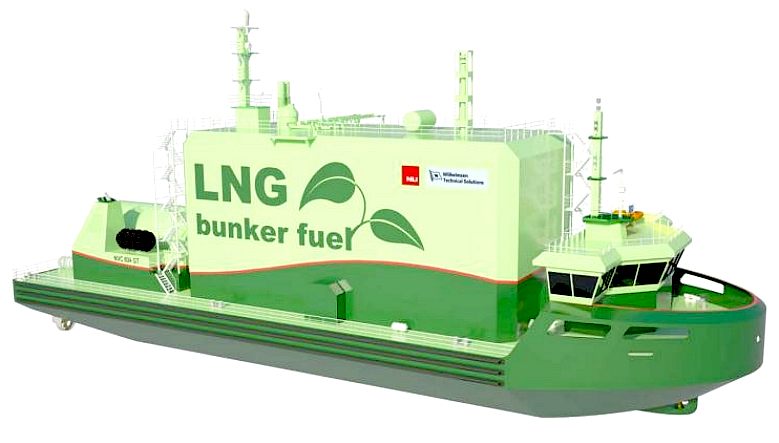
COMPANIES
IN ATTENDANCE
BG Group
Carnival Cruise Lines
Transport Canada
Royal Caribbean International
Norwegian Cruise Lines
Clean Energy
Eidesvik
Encana Oil & Gas
Moran Towing Corp
Rolls Royce
Excelerate Energy
Wärtsilä
ABS
NASSCO
Seacor Ocean Transport
DNV
Kirby Inland Marine
GTT
Shell
United States Coast Guard
Teekay Shipping
Seaspan Ferries
|
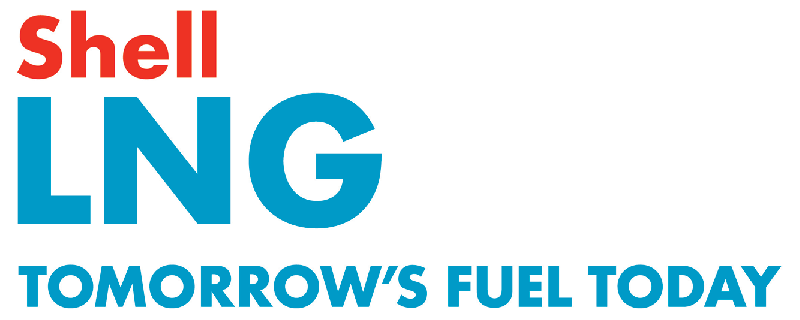
Shell
is a global group of energy and
petrochemicals companies with around 90,000
employees in more than 80 countries and
territories. We are the leading
international oil company in the LNG
industry and our capabilities span the full
LNG value chain. From floating LNG to
small-scale liquefaction, our innovative
approach ensures we are ready to help tackle
the challenges of the new energy future.
CO-SPONSOR
2014
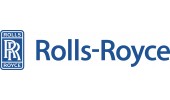
The
Energy business of Rolls-Royce is a
world-leading supplier of aero-derived gas
turbine and reciprocating engine power and
gas compression packages for the world’s
energy industries. The business has a
substantial market presence in oil and
gas-related applications, and a growing
presence in land-based power generation
installations, including industrial,
commercial and municipal applications.
More than 15,000 units have been supplied to
customers in nearly 120 countries, and
approximately 50 per cent of the business’
sales are derived from aftermarket services.
SPONSORS
& EXHIBITOR 2014
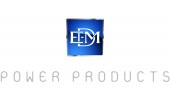
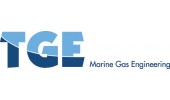
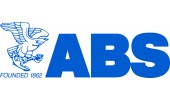
ABS
is a leading international classification
society devoted to promoting the security of
life, property and the marine environment
through the development and verification of
standards for the design, construction and
operational maintenance of marine-related
facilities. The society has been at the
forefront of developing Rules and Guidance
for vessels operating in low temperatures.
ABS and the Russian Maritime Register of
Shipping (RS) have joined to develop
classification Rules for Arctic Liquefied
Natural Gas Carriers. To help address the
challenges of vessels operating in the
Arctic region, ABS has produced a Guide for
Vessels Operating in Low Temperature
Environments. Visit the ABS website at www.eagle.org.
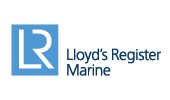
Lloyd’s
Register is a leading provider of marine
classification services around the world,
helping ensure that internationally
recognised safety and environmental
standards are maintained at every stage of a
ship's life.
But
we are not just about surveying ships; we
are dedicated to helping our clients achieve
the best possible performance from their
fleets and operations. Lloyd’s Register is
at the forefront of supporting innovation in
gas technology. As well as leading
developments in gas-fuelled shipping, we are
helping make safe LNG bunkering possible,
assisting ports and port operators to
understand the steps involved in addressing
LNG bunkering risks.
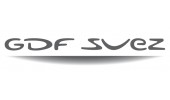
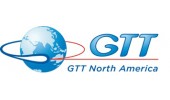
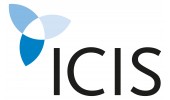
MEDIA
PARTNERS 2014
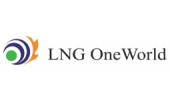
LNG
OneWorld, a wholly owned subsidiary of
Drewry Shipping Consultants, is an
established brand within the LNG market
place. LNG OneWorld for over a decade has
been providing the industry professionals
with rich and in-depth coverage on the LNG
value chain helping them keep abreast of the
trends in the industry. It provides latest
news, editorials besides latest trade and
shipping data. With strength of over 8,000
registered members across the world. LNG
OneWorld contributes to help make better
trading and investment decisions. LNG
OneWorld’s subscriber base includes oil
& gas majors, shipowners, shipyards,
terminal operators, traders, risk managers,
analysts, and industry leaders. To be a part
of the LNG family and actively participate
in the live discussion forums on the latest
LNG issues all are welcome to register on www.lngoneworld.com
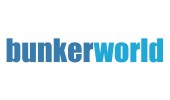
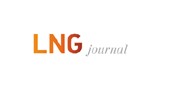
LNG
journal, the preferred magazine for the
industry's executives and engineers. It
tracks commercial developments such as
tenders, contracts, and new projects in
shipping and the construction and planning
of import and production plants. Trading,
pricing and product specification trends are
highlighted. Legal developments are tracked
in the fields of supply, shipping and
commercial finance contracts and insurance.
SUPPORTING
ASSOCIATIONS 2014

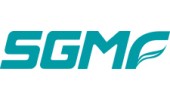
New
non-governmental organisation (NGO) to
promote safetyand industry best practice in
the use of LNG as a vessel fuel. SGMF
seeks to promote safe and responsible
operations for both LNG-fuelled
vessels and LNG bunker supply logistics.
SGMF seeks to promote best practice criteria
to all with responsibilities for, or an
interest in, the use of LNG as marine fuel.
SGMF was formed as a sister NGO to the
Society of International Gas Tanker and
Terminal Operators (SIGTTO). SGMF membership
is open to all stakeholders involved in the
LNG bunkering supply chain. SGMF members
will range from bunker suppliers, shipowners
and bunker barge operators to port
authorities and regulators
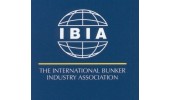
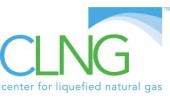
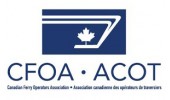
OFFICIAL
PUBLICATION

|
LNG
FORUM
CONTACTS
Maritime Customer Services
PO BOX 406 West Byfleet KT14 6WL UK
Tel: +44 (0) 20 7017 5510
Fax: +44 (0) 20 7017 4745
Email: maritimecustserv@informa.com
Paul Skinner - Sponsorship
Maple House, 149 Tottenham Court Road, London, W1T 7AD
Tel: +44 (0) 20 7017 4402
Email: paul.skinner@informa.com
Kathryn Barnard - Speaking opportunities
Tel: +44 (0)20 7017 6749
Email: kathryn.barnard@informa.com
Stephen
Newey - Exhibiting & General information
+44
(0)20 7551 9779
stephen.newey@informa.com




ABOUT
LNG
A natural gas vehicle or NGV is an alternative fuel vehicle that uses compressed natural gas
(CNG) or liquefied natural gas (LNG) as a cleaner alternative to other fossil fuels. Natural gas vehicles should not be confused with vehicles powered by propane (LPG), which is a fuel with a fundamentally different composition. Worldwide, there were 14.8 million natural gas vehicles by 2011, led by Iran with 2.86 million, Pakistan (2.85 million), Argentina (2.07 million), Brazil (1.70 million), and
India (1.10 million). The Asia-Pacific region leads the world with 6.8 million
NGVs, followed by Latin America with 4.2 million vehicles. In the Latin American region almost 90% of NGVs have bi-fuel engines, allowing these vehicles to run on either gasoline or
CNG. In Pakistan, almost every vehicle converted to (or manufactured for) alternative fuel use typically retains the capability to run on ordinary gasoline.
As of 2009, the U.S. had a fleet of 114,270 compressed natural gas
(CNG) vehicles, mostly buses; 147,030 vehicles running on liquefied petroleum gas (LPG); and 3,176 vehicles liquefied natural gas (LNG). Other countries where natural gas-powered buses are popular include India, Australia, Argentina, and
Germany. In OECD countries there are around 500,000 CNG vehicles. Pakistan's market share of NGVs was 61.1% in 2010, follow by Armenia with 32%, and Bolivia with 20%. The number of NGV refueling stations has also increased, to 18,202 worldwide as of 2010, up 10.2% from the previous year.
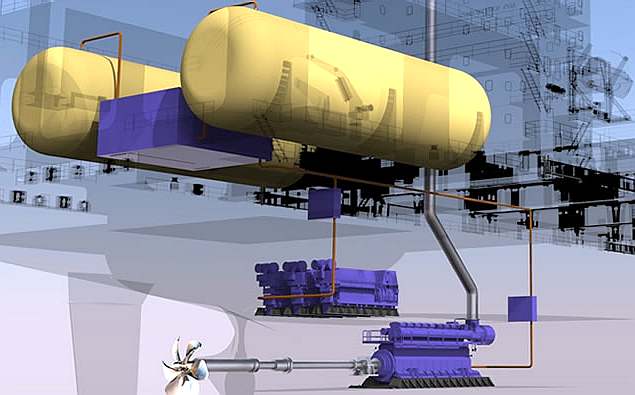
This
is a typical LNG fuel tank installation for large ships.
Shipping Insight 2014 is an event
in the US that looks at the issues of LNG bunkering and supply.
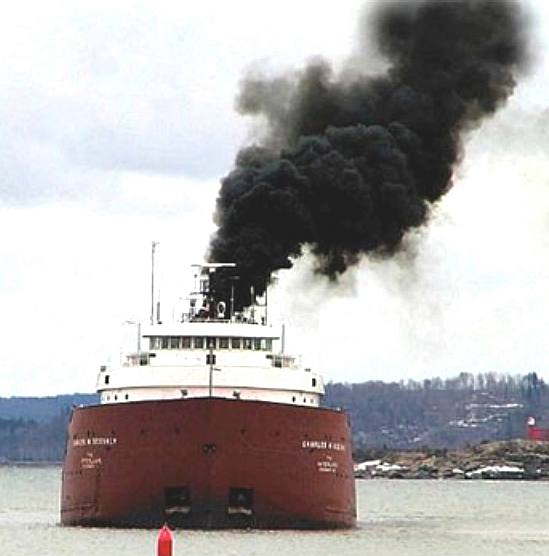
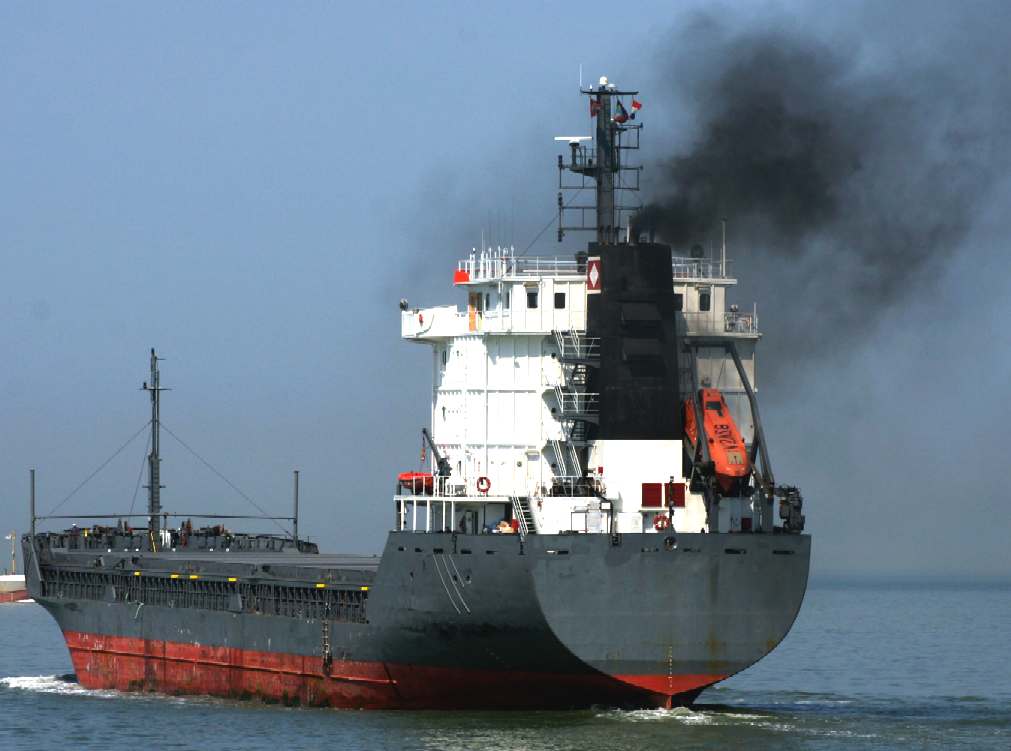
Letting
off steam. A couple of Smoky-Joes. Multiply these pictures by 100,000 and
you begin to see the scale of the problem.
OPEC
ENERGY SUBSIDIES - MAY 18 2014
Fossil fuel subsidies cost governments in emerging markets more than $500 billion every year and are a major contributor to climate change, according to the International Energy Agency (IEA) and International Monetary Fund (IMF).
The biggest subsidies are concentrated in the Middle East, North Africa, Asia and parts of Latin America, according to the IEA's Fossil Fuel Subsidy Database
(http://www.iea.org/subsidy/index.html).
Moreover energy-exporting countries accounted for three quarters of all consumption subsidies in 2012, according to the IEA and OPEC members account for more than half the world's subsidies.
Subsidies account for 82 percent of the cost of electricity and fuel in Venezuela, 80 percent in Libya, 79 percent in Saudi Arabia, 74 percent in Iran, and 56 percent in Iraq and Algeria. By contrast, the average rate of subsidy is just 18 percent in India and 3 percent in China.
In cash terms the world's biggest subsidies are in Iran, Saudi Arabia and Russia, all of which are major oil producers. Subsidies cost these three countries a combined total of $180 billion per year in 2012.
RATIONAL PRICING
In September 2009, the leaders of the world's largest economies meeting at the G20 summit in Pittsburgh committed themselves to phase out inefficient fossil fuel subsidies over the medium term.
According to the IEA, phasing out subsidies for oil, gas and electricity and aligning prices with international benchmarks would cut growth in energy demand by 5 percent and carbon dioxide emissions by 2 billion tonnes a year by 2020 - equivalent to the current combined emissions of Germany, France and the UK.
Raising gasoline, diesel and kerosene tariffs to market levels would save 4.7 million barrels of oil a day by the end of the decade ("World Energy Outlook 2011").
Cutting subsidies would also dramatically improve government budgets. Of 58 countries which subsidised gasoline, diesel or kerosene in 2010, 46 were running budget deficits, and in 27 cases the deficit amounted to more than 3 percent of GDP, the IMF explained in a staff note highly critical of the burden on taxpayers.
Halving subsidies would have reduced the average deficit from 2.1 percent of GDP to just 0.8 percent
("Petroleum product subsidies: cost, inequitable and rising" Feb 2010).
Subsidies often crowd out spending on infrastructure, development and social welfare. Indonesia spends more on fuel subsidies than on education or healthcare.
Venezuela sells gasoline for just 6 U.S. cents per gallon. The cost in lost export revenues is $30 billion, more than the combined value of all state spending on social programmes, Jim Krane at Rice University explained in a briefing paper published this month ("Navigating the perils of energy subsidy reform" May 2014).
WASTE AND HARM
Governments justify subsidies on the grounds that they alleviate poverty and promote economic development, but neither claim is really true.
Most of the benefits accrue to the middle class rather than poor because middle class families have more electrical appliances and their own cars.
In Indonesia, for example, the top 40 percent of high-income families absorb 70 percent of subsidies, while the bottom 40 percent of low-income families receive only 15 percent of the benefits ("The scope of fossil fuel subsidies in 2009" Nov 2010).
Subsidies also promote wasteful consumption. Saudi Arabia's artificially cheap gasoline and electricity have made the country one of the highest per-capita
energy users in the world and threaten to restrict the amount of oil left for export.
Another problem is fuel adulteration. Most countries subsidise kerosene used in cooking and lighting more heavily than gasoline and diesel used to fuel vehicles. But the resulting price gap encourages the illegal blending of kerosene into the diesel supply. Policies aimed at providing cheap cooking fuel for the poor end up helping middle class families drive motor cars.
And subsidies promote smuggling. Diesel sells for as little as 12 U.S. cents per litre in Iran compared with $1.20 per litre across the border in Pakistan. As a result the IEA estimates 60,000 barrels of diesel are smuggled out of Iran to Pakistan
and Afghanistan every day.
To combat smuggling into Yemen and other neighbouring states Saudi Arabia
inspects vehicles crossing its borders to ensure they only have enough fuel in the tank to reach the nearest refuelling station on the other side ("World Energy Outlook2013").
SOCIAL COMPACT
The theoretical case for reducing or eliminating subsidies is overwhelming, but in practice progress has been slow.
The fact that subsidies are concentrated in exporting countries and typically benefit middle-income and lower middle-income groups is no accident. Subsidies have a political dimension that makes them especially hard to reform.
Cheap electricity and fuel is often an important part of the social compact between governments and the population. "In major energy-producing countries consumption subsidies that artificially lower energy prices are seen as a means of sharing the value of indigenous natural resources," the IEA explains.
More bluntly, Rice University's Jim Krane observes: "Fossil fuel subsidies have allowed energy exporting countries to distribute resource revenue, bolstering legitimacy for governments, many of which are not democratically elected."
Even in energy-importing countries, like Indonesia and Pakistan, subsidised electricity and kerosene is a vital way for politicians to buy support from the urban middle and lower-middle classes - the groups most likely to form the core of protest movements.
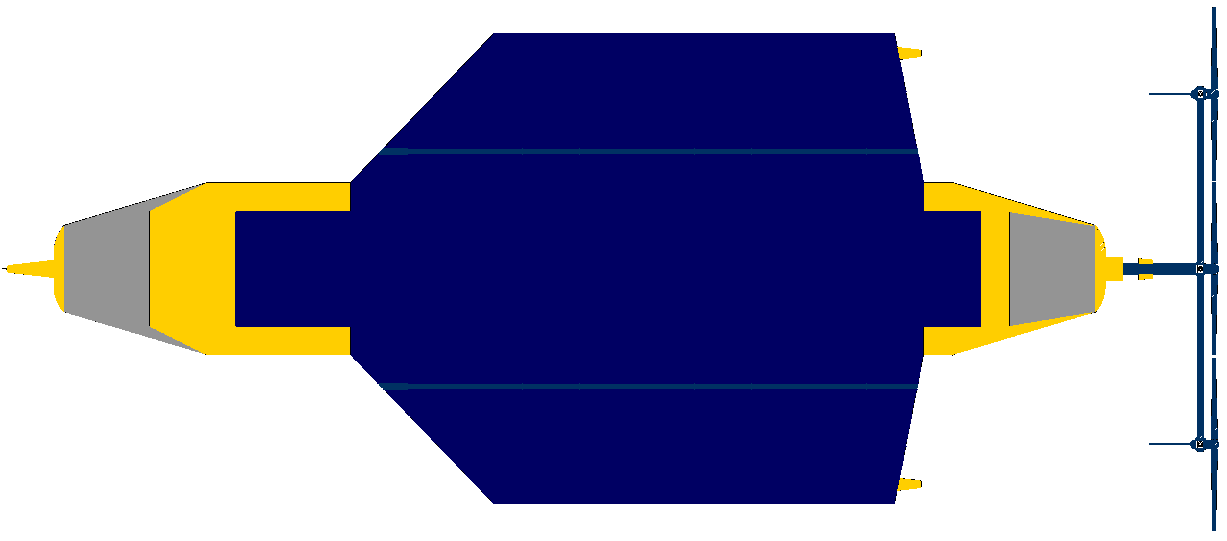
CCC
CHALLENGER - This is a draft design for the 'Climate Change Challenger,' a zero
carbon ship concept that may be up scaled to larger cargo
and cruise
vessels. If the concept is proven, it could provide a way for the IMO to reach
their zero carbon objectives for 2050 and 2100.
REFORM EFFORTS
Policymakers in most countries acknowledge the need to reduce or remove subsidies, and the approach has strong backing from the
World
Bank, IMF and IEA. But efforts to reduce subsidies have met with limited success.
Iran, Indonesia, Ghana, Kenya, the Philippines, Mozambique and several other countries have all pushed through substantial price increases over the last two decades.
In other cases, however, price rises have had to be rolled back following popular protests. And the fact that Iran and Indonesia remain among the world's biggest subsidisers points to how limited the reforms have been even there in the face of tough public opposition.
To succeed reform programmes need to be accompanied by a strong communications strategy which points out that most of the benefits from subsidies go to wealthy households who can afford to pay the full cost of
energy, and carefully targeted social measures to compensate the poorest households.
Timing is important. Reforms are more likely to be successful if the oil price is falling, when households are less likely to notice the removal of subsidies, than when energy costs are already rising. China and Indonesia both took advantage of lower oil prices in 2009 and 2010 to reduce support.
Even if it proves impossible to remove subsidies altogether, energy prices can be depoliticised by explicitly linking the retail cost of gasoline, diesel and kerosene to international benchmarks with fixed but adjustable formulas.
"Establishing an automatic pricing formula ... can help distance the government from pricing of energy and make it clearer that domestic price changes reflect changes in international prices which are outside the control of the government," according to the IMF ("Energy subsidy reform: lessons and implications" Jan 2013).
Even so, removing subsidies remains fiendishly difficult. "Many countries have successfully implemented reforms only to see subsidies reappear when international oil prices increase," the IMF laments. The temptation to reintroduce price controls to help
households with rising living costs is strong.
And in the biggest
petro-states, including Saudi Arabia, Iran, Iraq,
Russia,
Kuwait, Venezuela, Libya and Algeria there has been virtually no progress towards more sensible energy pricing.
The result is a prodigious waste of energy. The petro-states are among the world's biggest and fastest-growing oil consumers and some are now having to import natural gas for power generation to meet
electricity demand. And the greenhouse emissions are enormous.
It is all ultimately unsustainable. "The state itself is teaching people to waste resources," complains one Kuwaiti newspaper editor. But subsidy reform is probably impossible without meaningful
political and social
change.
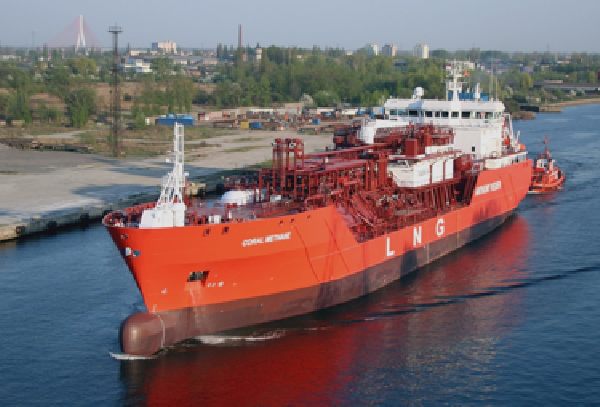
LLOYDS
REGISTER & UNIVERSITY COLLEGE LONDON ENERGY INSTITUTE - MARCH 2014
Heavy fuel oil will remain the main fuel for deep sea shipping in year 2030 indicates new research from Lloyd’s Register and University College London’s Energy Institute. In a complex study involving many inter-related factors, ‘Global Marine Fuel Trends 2030’ (GMFT 2030) limits itself to the container ship, bulk carrier/general cargo and tanker (crude & chemical/products) sectors which represent about 70% of the shipping industry’s fuel demand.
Marine fuels considered - Ranged from liquid fuels used today (HFO, MDO/MGO) to their bio-alternatives (bio-diesel, straight vegetable oil) and from LNG and biogas to methanol and hydrogen (derived both from methane or wood biomass) were included in the study.
|
Mobil
|
Chevron
|
Esso
|
Shell
|
Texaco
|
|
.
|
.
|
.
|
.
|
.
|
|
Motorship
Fuel Oil
|
Intermediate
Bunker Fuel (BF*)
|
Bunker
Fuel Oil (BFO)
|
Marine
Fuel Oil (MFO*)
|
Interfuel
(IF*)
|
|
Light
Marine Fuel Oil (LMFO)
|
Intermediate
Bunker Fuel (BF*)
|
Intermediate
Fuel (IF*)
|
Marine
Fuel Oil (MFO*)
|
IF*
|
|
Marine
Diesel Oil (MDO)
|
Marine
Diesel Oil (MDO)
|
Marine
Diesel Oil (MDO)
|
Marine
Diesel Oil (MDF)
|
Marine
Diesel Oil (MDO)
|
|
Distillate
Marine Diesel Oil
|
Light
Diesel
|
Light
Diesel Oil (LDO)
|
Marine
Diesel Fuel or Gas Oil (MDF/GO)
|
Marine
Distillate
|
|
Marine
Gas Oil (MGO)
|
Gas
Oil (GO)
|
Marine
Gas Oil (MGO)
|
Gas
Oil (GO)
|
Gas
Oil (GO)
|
MERCHANT
SHIPPING (POLLUTION) ACT 2006
The Merchant Shipping (Pollution) Act 2006 (c 8) is an Act of the Parliament of the
United
Kingdom. It has three main purposes: to give effect to the Supplementary Fund Protocol 2003, to give effect to Annex IV of the
MARPOL Convention, and to amend section 178(1) of the Merchant Shipping Act 1995.
MARPOL
73/78
Marpol 73/78 is the International Convention for the Prevention of Pollution From Ships, 1973 as modified by the Protocol of 1978. ("Marpol" is short for marine pollution and 73/78 short for the years 1973 and 1978.)
Marpol 73/78 is one of the most important international marine environmental conventions. It was designed to minimize pollution of the seas, including dumping, oil and exhaust
pollution. Its stated object is to preserve the marine environment through the complete elimination of pollution by oil and other harmful substances and the minimization of accidental discharge of such substances.
The original MARPOL was signed on 17 February 1973, but did not come into force due to lack of ratifications. The current convention is a combination of 1973 Convention and the 1978 Protocol. It entered into force on 2 October 1983. As of May 2013, 152 states, representing 99.2 per cent of the world's shipping tonnage, are parties to the convention.
All ships flagged under countries that are signatories to MARPOL are subject to its requirements, regardless of where they sail and member nations are responsible for vessels registered under their respective nationalities.
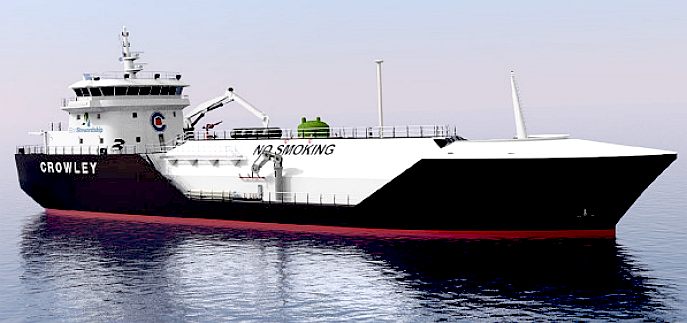
ENVIRONMENTAL ISSUES
Emissions from bunker fuel burning in ships contribute to air pollution levels in many port cities, especially where the emissions from industry and road traffic have been controlled. The switch of auxiliary engines from heavy fuel oil to
diesel oil at berth can result in large emission reductions, especially for
SO2 and PM. CO2 emissions from
bunker fuels sold are not added to national GHG emissions. For small countries with large international ports, there is an important difference between the emissions in territorial waters and the total emissions of the fuel sold.
The environmental impact of shipping includes greenhouse gas emissions and oil pollution. Carbon dioxide emissions from shipping is estimated to be 4 to 5 percent of the global total, and estimated by the
International Maritime Organization (IMO) to rise by as much as 72 percent by 2020 if no action is taken.
The First Intersessional Meeting of the IMO Working Group on Greenhouse Gas Emissions from Ships took place in Oslo, Norway on 23–27 June 2008. It was tasked with developing the technical basis for the reduction mechanisms that may form part of a future IMO regime to control greenhouse gas emissions from international shipping, and a draft of the actual reduction mechanisms themselves, for further consideration by IMO’s Marine Environment Protection Committee (MEPC).
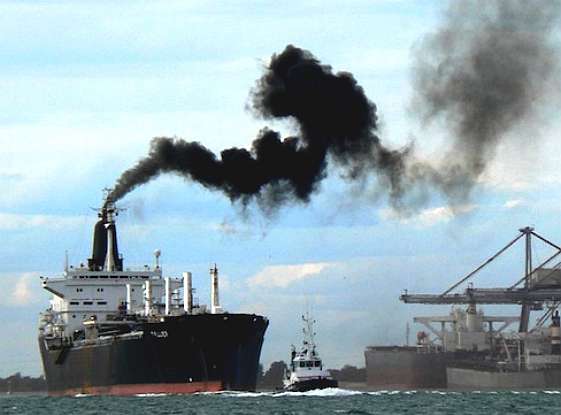
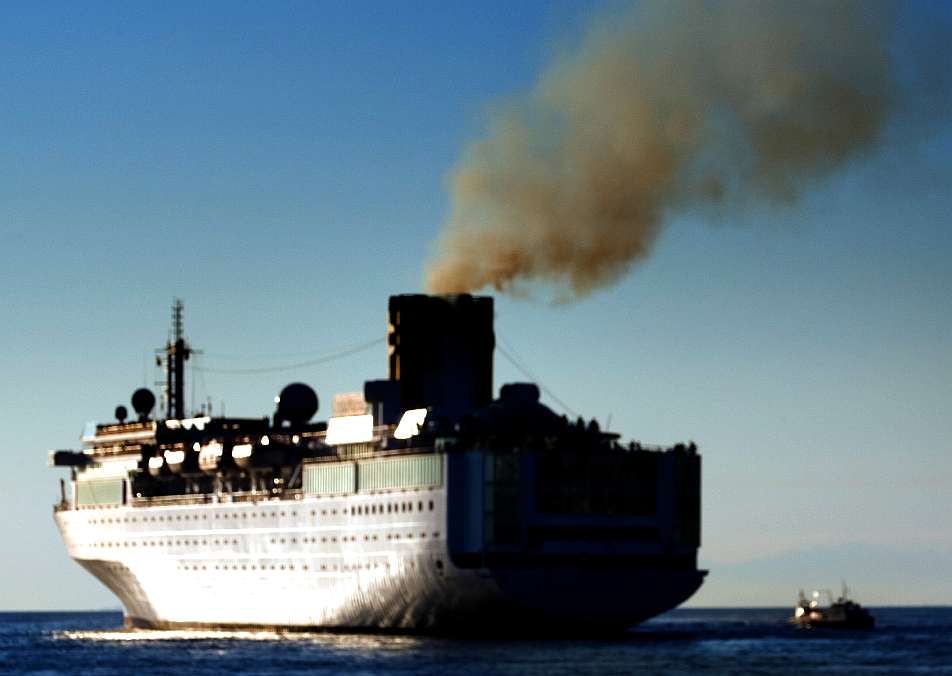
EXHAUST EMISSIONS
Exhaust emissions from ships are considered to be a significant source of air pollution, with 18 to 30 percent of all nitrogen oxide and 9 percent of sulphur oxide pollution. "By 2010, up to 40 percent of air pollution over land could come from ships." Sulfur in the air creates acid rain which damages crops and buildings. When inhaled the sulfur is known to cause respiratory problems and even increase the risk of a heart attack. According to Irene Blooming, a spokeswoman for the European environmental coalition Seas at Risk, the fuel used in oil tankers and container ships is high in sulfur and cheaper to buy compared to the fuel used for domestic land use. "A ship lets out around 50 times more sulfur than a lorry per metric tonne of cargo carried." Cities in the U.S. like Long Beach, Los Angeles, Houston, Galveston, and Pittsburgh see some of the heaviest shipping traffic in the nation and have left local officials desperately trying to clean up the air. Increasing trade between the U.S. and China is helping to increase the number of vessels navigating the Pacific and exacerbating many of the environmental problems. To maintain the level of growth China is experiencing, large amounts of grain are being shipped to China by the boat load. The number of voyages are expected to continue increasing.
3.5 to 4 percent of all climate change emissions are caused by shipping. Air pollution from cruise ships is generated by diesel engines that burn high sulfur content fuel oil, also known as bunker oil, producing sulfur dioxide, nitrogen oxide and particulate, in addition to carbon monoxide, carbon dioxide, and hydrocarbons. Diesel exhaust has been classified by EPA as a likely human carcinogen. EPA recognizes that these emissions from marine diesel engines contribute to ozone and carbon monoxide
non-attainment (i.e., failure to meet air quality standards), as well as adverse health effects associated with ambient concentrations of particulate matter and visibility, haze, acid deposition, and eutrophication and nitrification of water. EPA estimates that large marine diesel engines accounted for about 1.6 percent of mobile source nitrogen oxide emissions and 2.8 percent of mobile source particulate emissions in the United States in 2000. Contributions of marine diesel engines can be higher on a port-specific basis. Ultra-low sulfur diesel (ULSD) is a standard for defining diesel fuel with substantially lowered sulfur contents. As of 2006, almost all of the petroleum-based diesel fuel available in Europe and North America is of a ULSD type.
As one way to reduce the impact of greenhouse gas emissions from shipping, vetting agency RightShip has developed an online “GHG Emissions Rating” as a systematic way for the industry to compare a ship’s CO2 emissions to peer vessels of a similar size and type. Using higher rated ships can deliver significantly lower CO2 emissions across the voyage length.
One source of environmental pressures on maritime vessels recently has come from states and localities, as they assess the contribution of commercial marine vessels to regional air quality problems when ships are docked in port. For instance, large marine diesel engines are believed to contribute 7 percent of mobile source nitrogen oxide emissions in Baton Rouge/New Orleans. Ships can also have a significant impact in areas without large commercial ports: they contribute about 37 percent of total area nitrogen oxide emissions in the Santa Barbara area, and that percentage is expected to increase to 61 percent by 2015. Again, there is little cruise-industry specific data on this issue. They comprise only a small fraction of the world shipping fleet, but cruise ship emissions may exert significant impacts on a local scale in specific coastal areas that are visited repeatedly. Shipboard incinerators also burn large volumes of garbage, plastics, and other waste, producing ash that must be disposed of. Incinerators may release toxic emissions as well.
In 2005 MARPOL Annex VI came into force to combat this problem. As such cruise ships now employ cctv monitoring on the smoke stacks as well as recorded measuring via opacity meter with some also using clean burning gas turbines for electrical loads and propulsion in sensitive areas.

CMTI LNG REPORT/STUDY
CMTI claim to have examined the technical and economic feasibility of LNG Retrofit with the financial support from the Maritime Innovation-Impulse Projects (MIIP) of ‘Nederland Maritiem Land (NML)’. Bottlenecks and solutions have been identified. The information for this study is partly obtained from a number of interviews with stakeholders and a study of
Panteia/NEA.
ECONOMIC
FEASIBILITY
As yet, retrofitting inland vessels for natural gas as marine fuel is only profitable for the largest classes (135*14.2m, 5600t; 2barge, 4600t and 4barge, 9200t) according to the Panteia/NEA research. With the assumption of a cost reduction of 50% the class 110 * 11.4m, 2750t can be added to the list.
Large-scale LNG retrofit will only take place if the Government facilitates with incentives and/or stringent measures.
The estimated fuel cost for LNG is conservative. According to LNG fuel suppliers LNG will be about 25% lower in price than diesel.
The cost for LNG retrofit strongly depends on the outcome of the HAZID study that must be carried out together with Class: What needs to be customized for security reasons? The list of actions will give LNG retrofit a price tag. The individual HAZID generates extra costs and may cost
extra time.
MARITIME LEGISLATION
The IMO ‘Interim Guidelines on safety for natural gas-fuelled engine
installations in ships’ form the basis for applying LNG as fuel for propulsion.
These guidelines are voluntary.
The IMO ‘International Code for Safety for Ships using Gases or Other Low Flashpoint Fuels (IGF Code)’ is under construction. The IMO Maritime Safety Committee (MSC) has dedicated IMO-BLG to develop the IGF Code, advised by IMO-DE, -FP, -SLF en
-STW.
POWERTRAIN
The transient response of the gas engine is different from the diesel engine. The new gas engine or the converted diesel engine must be tuned to guarantee reliability and power at operating conditions with low fuel consumption and minimal emissions.
There are two types of engines for natural gas as fuel, namely the ‘lean-burn’ and the so-called
‘dual-fuel’ engines. Both engine types are available from several suppliers for both inland and sea-going vessels.
The above engine types can be connected directly to the drivetrain (gas/diesel-direct) with or without ‘Power take-off/Power take-in’ option for various auxiliaries or when extra power is
needed, e.g. for manoeuvring. Another lay out is with generator sets (gas/diesel-electric).
Applying gas engines in combination with electric drive is a promising concept. The engine management system ensures that the desired power is supplied by the generator sets switching engines on/off, and/or managing the engine speed. Redundancy is guaranteed.
Applying natural gas as marine fuel reduces the emissions of NOx by 80% to 95%, the CO2
emissions by 20% to 25%. Soot and sulphur emissions are almost zero and there are no
carcinogenic substances such as PAK’s, aldehydes and butadiene.
It is important to know that if pure unconsumed natural gas comes into the environment, the greenhouse effect will be 21 times higher. Some LNG engines generate so-called ‘methane slip’. The positive effect on CO2 emissions is thus partially offset.
CMTI RECOMMENDATIONS
‘Methane slip’ must absolutely be avoided. This may be arranged with after treatment.
Limit the HAZID approach as much as possible and using legislation instead of HAZID. The HAZID experiences can be transformed into legislation.
New calculations with the Panteia/NEA economic model should be performed with LNG fuel costs 25% lower than the diesel fuel price indicated by the LNG fuel suppliers.
ALTERNATIVE
ENERGY
A
return to sails using autonomous
management of sail booms has been proposed and investigated in several
designs, the object being to eliminate manual trimming. Wing sails have
been shown to work, but have never taken off. Though, recent proposals by
Japanese ship builders include large sails on deck, a variation of the Walker
wing-sail system. Rotary wings, or turbines
is another area of harvesting energy from nature that is in its infancy,
Solar power has been used to circumnavigate
the globe, but at relatively slow speeds. Wave
power is another area receiving renewed attention.
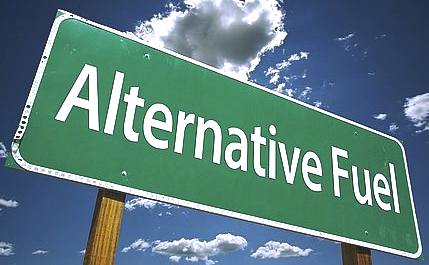
LINKS:
Marine
link news container lng ready worlds largest
ClassNK
press_release
Bunker
World ClassNK
hosts seminars on LNG as marine fuel
Marine
Link Class NK LNG seminars
http://www.iea.org
G
Captain
Harvey-Gulf-breaks-ground-on-nations-first-lng-bunkering-facility
http://www.iea.org/subsidy/index.html
http://www.marinelink.com/news/subsidies-wasteful-energy369301.aspx
http://www.fmc.gov/bureaus_offices/commissioner_doyle.aspx
http://www.maritimepropulsion.com/news/lng-marine-fuel-taking-hold-in-america
http://en.wikipedia.org/wiki/Natural_gas_vehicle
What-fuel-will-ocean-going-ships-be-burning-16-years-down-the-road
Kittiwake
bunker fuel testing analysis
MARPOL
Marine_fuel_management
Merchant_Shipping_(Pollution)_Act_2006
Fuel_oils
http://www.marinelink.com/news/container-lngready-worlds381524.aspx
http://gcaptain.com/harvey-gulf-breaks-ground-on-nations-first-lng-bunkering-facility/
http://www.classnk.or.jp/hp/en/hp_news.aspx?id=961&type=press_release&layout=8
http://www.bunkerworld.com/news/i130913/ClassNK-hosts-seminars-on-LNG-as-marine-fuel
http://www.marinelink.com/news/technologies-seminars373685.aspx
http://www.liquidminerals.com/fuels.htm
http://www.platts.com/commodity/oil
http://www.platts.com/Shipping/BunkerFuel
http://pejnews.com
http://www.assa-kz.com/en/services/Bunker/
http://www.wp-marine.co.uk/bunker_fuel.html
http://www.kittiwake.com/bunker-fuel-testing-analysis
http://en.wikipedia.org/wiki/MARPOL
http://en.wikipedia.org/wiki/Marine_fuel_management
http://en.wikipedia.org/wiki/Merchant_Shipping_(Pollution)_Act_2006
http://en.wikipedia.org/wiki/Fuel_oil
Commissioner_doyle
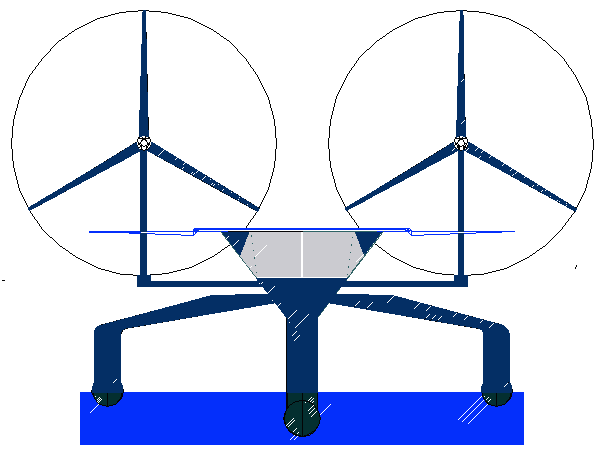
Forget
bunker fuel, electric ships are now possible that operate on nothing but energy
harvested directly from nature. The ZCC above is a 50 ton
vessel with a low frontal area and hyper efficient SWASH hull, as with the
proposed merchant ZZC
platforms. This version is upgraded to 40kW wind turbines. The total
energy harvesting capacity of this design is around 176kW (235hp), giving an Energy
Harvested to Displacement ratio (EH/D) of 3.52kW/ton (4.72hp/ton). Larger
versions of this format could be the emission free cargo ships of
the future. The hull is 50m (163ft) hull on the waterline, length OAL is
56M (183ft).
The
cost of diesel fuel to operate this ship continuously for a year is
approximately: .29gals/hp x 117 x 24 x 365 = $297,226.80 (£183,393.99) In
ten years that would be $2.97M (£1.83M). Fuel for thought! Imagine
this craft unmanned
and 250m long with drones
for air
strikes. Rule Britannia!
|





































